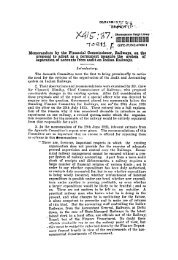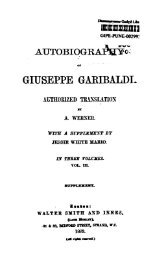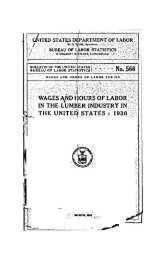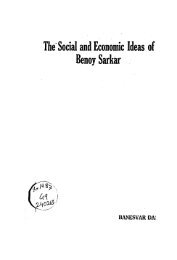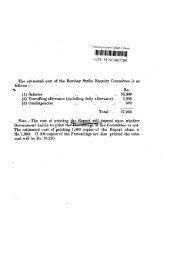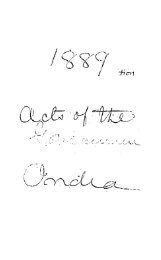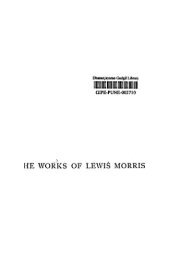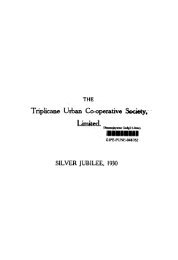Modular Infotech Pvt. Ltd. - DSpace
Modular Infotech Pvt. Ltd. - DSpace
Modular Infotech Pvt. Ltd. - DSpace
Create successful ePaper yourself
Turn your PDF publications into a flip-book with our unique Google optimized e-Paper software.
A60<br />
(c) wages of Chinese labour are not known to shew any<br />
remarkable variation throughout British Malaya;<br />
(d) prices of prepared opium shew no great variation; and<br />
(e) no restrictions on the opium habit in· 80 far as<br />
adult Chinese males are concerned obtain in any<br />
particular territory in British Malaya.<br />
6. We think that the explanation of the variation lies in the<br />
variation in the degree of indulgence obtaining in the various tribes<br />
of Southern Chinese which constitute the Chinese immigrant<br />
population of British Malaya.<br />
7. This variation was admitted by many of our witnesses,<br />
but we were, perhaps naturally, not able to get them to commit<br />
themselves to more exact statements than that the Hokkiens are<br />
the heaviest smokers.<br />
8. Whether this admission should be taken to imply that a<br />
greater percentage of Hokkiens than of other tribes smokes, or that<br />
a Hokkien smoker consumes more than a smoker of another tribe<br />
or both, was more than we could expect to derive from the personal<br />
observations of our witnesses.<br />
9. We do not say that this is the only explanation of the·<br />
difference between the per capita consumption of the adult Chinese<br />
male population in the Straits Settlements and the Federated Malay<br />
States, but we do say that it is a most important factor in the<br />
explanation.<br />
10. Appendix IV shows that of 1,000 of the Chinese male<br />
population in the Straits Settlements, 589 are Hokkiens and<br />
Tiechius-the biggest smokers according to our evidence-and 278<br />
are Cantonese and Khehs-claimed by our witnesses to be the<br />
smallest smokers amongst the China-born part of the community.<br />
This contrasts remarkably with the Federated Malay States where<br />
in 1921 the Cantonese and Khehs con.tributed 647 to every thousand<br />
of the Chinese male population, and the Hokkiens and Tiechiu8<br />
only 260.<br />
11. We judge from the corresponding resolution of the<br />
Advisory Committee of the League of Nations on the Opium Traffic<br />
that the use of "uniform" implies a formula of general applicability,<br />
to all territories coming within the scope of the League. We, therefore,<br />
feel it essential to note a difference between British Malaya and<br />
the neighbouring Colony of Hongkong.<br />
12. We gather from the Hongkong Census Report 1921 .that<br />
nearly all of the adult Chinese males in that Colony are Cantonese<br />
or Khehs, and we are not surprised to observe from the slight data<br />
before us that the per capita consumption in Hongkong is considerably<br />
less than in the Federated Malay States and remarkably lower<br />
than in the Straits Settlements.<br />
13. We have referred in many parts of this report to this tribal<br />
variation of degree of indulgence, but we think its importance in<br />
relation to the point now under consideration cannot be overstated .<br />
. , ....<br />
•



